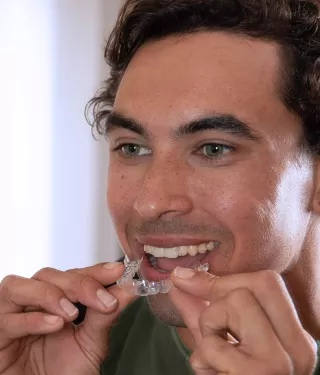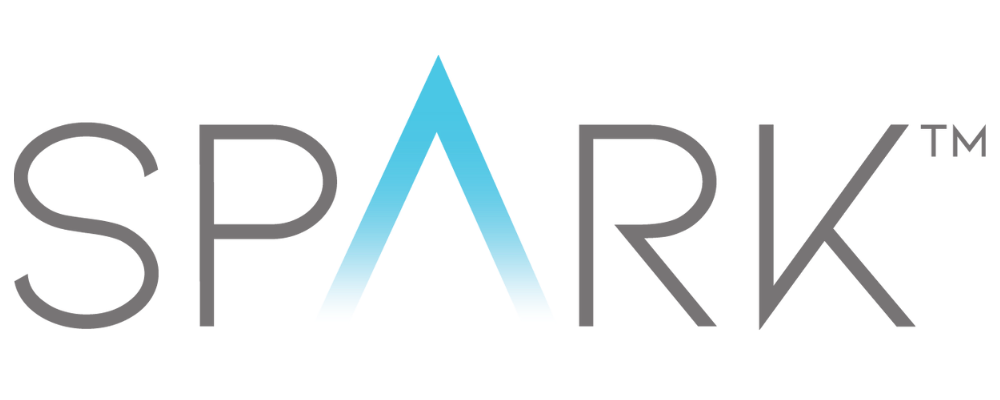How To Determine If Clear Aligners Are Right For You

My name is Mike DePascale and I am an orthodontist in southeastern Connecticut. I graduated from the University of Maryland orthodontics program in 2017, after which I joined Kozlowski Orthodontics, a practice that focuses on the highest quality treatment, efficient orthodontics, and an amazing patient experience. I am a member of the Spark Founders Group and treat approximately 220 aligner cases per year, in addition to the approximately 600 with braces. I have worked exclusively with Spark as a clear aligner system since January of 2019 after switching from Invisalign™* and have participated in its early and consistent use. I have also had the pleasure of being part of its guidance in development and evolution of new methods.
I remember being very excited about treating patients with clear aligners as a resident. I thought to myself many times that “this is the future of orthodontics,” and in many ways, I still believe that to be the case. In fact, I am even more excited now than I was years ago! My goal has always been to deliver excellent results in orthodontics, while at the same time giving patients a “wow experience” in a way that is easy and enjoyable for them. Spark clear aligners allow me to do just that.
As I continued to treat more and more patients with aligners before Spark was available, I began to notice things that worked well and things that did not. In doing so, I found some of the inefficiencies in the product and software I was using. I was limited in what tooth movement I was able to program digitally, which meant I had to change the mechanics I had planned, or that I would have used with braces. I felt the aligner material itself was not as precise as it could be, and made it difficult to predict extremely precise movements. I also had to give patients a way to handle discomfort with the edges of the aligners that came to be an expected side effect. What I love about Spark aligners is that they have addressed these concerns with an outstanding 3D software, a high quality and more transparent aligner, and a company who puts the orthodontist and patient at the forefront of their design. Now that the limitations have been removed, I’m able to not only expand the types of patients that can be treated but do it in a way that makes their experience even better.
Step 1: Understand how clear aligners work
While both clear aligners and braces move teeth, the way in which they do so is different. With braces, a wire is placed into fixed brackets on the teeth and as the wire changes shape, the teeth move with it. Orthodontists can make adjustments to the wire size, shape, and material in order to facilitate these movements. With clear aligners, the setup and planning is different from the beginning. The orthodontist custom designs the treatment for each patient individually before anything else happens. A digital scan reproduces the exact position of each tooth and then the orthodontist can plan the amount of movement of each tooth individually or as a unit, how fast they will move, how many aligners the patient will have, and what, if anything, will be placed on the teeth. For example, often small, tooth-colored attachments are placed on specific teeth to guide their movement. The patient will then be given a series of aligner trays. Each tray will be changed periodically, ranging from every 4 days to every 14 days, most commonly falling in the middle at once per week. Throughout the treatment, the patient will see an orthodontist, who is an expert in checking on the tracking of the aligners and their progress, and will advise on any adjustments as needed. If they are fitting well and the teeth are moving properly, treatment will resume as planned. If modifications are necessary, they can be tailored to each individual, which is why it’s important to be using an aligner system that is guided by a professional and requires periodic aligner checks.
This is one of the major benefits of clear teeth aligners - everything is customized. We know that each person is different in their treatment needs and Spark’s system allows the orthodontist to carefully and specifically accommodate everyone individually. For example, implants, which cannot be moved, or crowns, which are challenging to keep braces on, are much easier to work with as aligners can be designed in a way that simulates a tooth being immobilized in the bone or moves a tooth without the need of a bracket or an attachment. This makes clear aligners an excellent option for adults with significant prior dental work. It also provides them with a more esthetic option if one of their goals is to be treated with something more discreet.
Step 2: Consider your age
Clear aligners are not only for adults. I have treated many teenagers and adolescents the same way either for similar reasons or simply because they prefer something that is removable, which brings me to my next point. The flexibility of aligners is another of their greatest strengths. They can be easily removed to brush and floss the teeth normally and there are no necessary adjustments or even suggested changes to diet. In addition, they can be taken out to have dinner with family or friends, to replace with a mouthguard for sports, to give a presentation, or any number of other short-lived activities. I have treated a myriad of athletes who prefer the fit of a mouthguard that is more well adapted to the teeth, which is only possible if the orthodontic appliances can be removed.
Step 3: Consider your condition
At the present time, there are not many orthodontic malocclusions I can think of that couldn’t effectively be treated with clear aligners, and they should be evaluated as an option for a wide variety of patients. A few of my favorite situations to use clear aligners are for those with anterior open bites (when the front teeth do not touch), those with periodontal concerns (less than ideal gum tissue or bone), those with missing teeth, and musicians, particularly who play wind instruments.
In the case of a person with an anterior open bite, there are two main reasons aligners can produce an amazing result. The first is that introducing a surface to bite on between the posterior teeth allows for those teeth to be pushed up or down. This is often a goal to help bring the anterior teeth together, which works by reducing the angle that the back teeth touch. The second is that it nearly eliminates the need for elastics, which aids in patient comfort and bite functionality, lending to better compliance and a better patient experience. With braces, anterior elastics are often required to close the bite, and they can be challenging and cumbersome for patients. For the periodontally compromised patient, the ability to remove the aligners is invaluable. A person with reduced bone or gum tissue (often due to their improper occlusion) must be able to maintain proper hygiene and be closely monitored. It is very simple to take the aligners out, clean the teeth with no restrictions, and replace them when finished. Braces do not provide this option.
Furthermore, those with missing teeth are very appreciative of anything that addresses that void. If an orthodontist treats such patients with braces, there is a waiting period until a tooth can be placed on the wire, and even then, it is difficult to properly maintain for the patient and clinician. If aligners are used, there can be an instantaneous improvement. The aligner itself can fill in the void to decrease the appearance of the missing tooth, and once the space is ideal or near ideal, it is very simple to place a tooth colored filling material in the area while the space is being maintained. The final aligner can be used to help the restorative dentist make a temporary crown and it can be kept until a final crown is placed.
Lastly, people who play wind instruments sometimes find it much easier to continue playing if they have an aligner that can be removed, rather than the adjustment that is required when brackets remain on the teeth and changes in lip pressure and air flow must be addressed. Though most do adjust, minimizing the adaptations necessary is welcome as orthodontic treatment is often a new experience. Anything that makes a patient’s lifestyle adjustments easier throughout the process is a good thing.
Step 4: Consult a knowledgeable orthodontist
Orthodontists are accustomed to making all of their own decisions in the application of appliances and mechanics with braces, but they could not do the same with aligners. That has created a sense of distrust in the aligner market, as well as a misconception that aligners are not as efficient or effective. The contrary is true with Spark clear aligners. They can be more efficient and more effective if properly applied. Clear aligners are a great option for most patients, and in my years of using them, that has been proven many times over.
I believe that Spark clear aligners will change the orthodontic landscape. For years prior to its inception, orthodontists had access to clear aligners, but they were always limited in some capacity. Spark’s team has created a product that is designed by and adjusted based on the continuing needs of orthodontists. They have offered complete customization, something we’ve not seen before in this space. In my opinion, this is the piece that was always missing with removable appliances.
Recently, I was able to treat someone with a severe anterior cross bite with clear aligners. Almost all of her upper front teeth were behind the lower ones and her treatment was completed in less than a year and with only 7 appointments. After we addressed her smile and her bite, she told me that she never even knew how much her smile could be improved until she came to our office.
I’ve also had the pleasure of providing orthodontic treatment to several patients who are extremely talented musicians and either currently have a career in music, or plan to. It is very rewarding to be able to ease the minds of patients and parents who are nervous that they may not adjust to the same level of their previous skill, but still want a beautiful smile. With aligners, the transition can be seamless, and I’ve been able to watch that happen in my practice. There were no extra appointments, no extra wax needed, and no extra lessons or adjustments to their typical music schedule.
Conclusion
At this time, you might be wondering something along the lines of, “That sounds great, but how much do these clear aligners cost? It must be way more than other options!” While that depends on the severity of malocclusion and work that the orthodontist will need to complete, Spark’s team has done an excellent job of allowing this to be an affordable option for orthodontists, and in turn, for our patients. In my experience the product is superior to other aligner systems I have used in the past. It is more clear, it’s more comfortable, it’s easier to work with, and it’s more effective. In our office the great news is this - it doesn’t cost more!
Spark is an excellent choice for anyone considering orthodontic treatment with clear aligners. With the continuously developing technology and evolution of new materials, software, and designs, aligners are available to more people than ever before. The key factor is to combine an outstanding company and product with a skilled clinician who can lead you down the path of success to a brand new smile and in turn, a brand new you. If you have questions about what Spark clear aligners can do for you, reach out to your local Spark provider to discuss the benefits and what to expect throughout the process. Along with a great orthodontist, they provide an unparalleled experience that can prove to not only be easier than you imagined, but will feel like you’re part of your own smile’s success, because you are!



